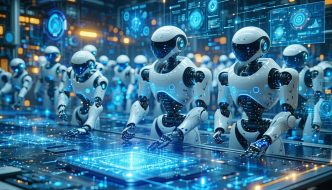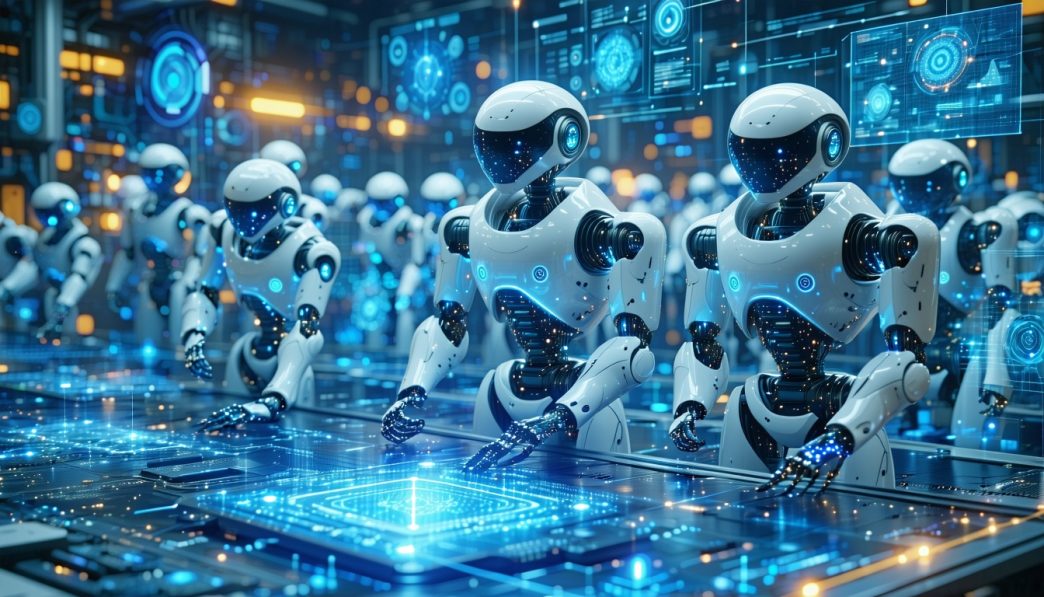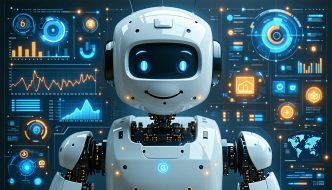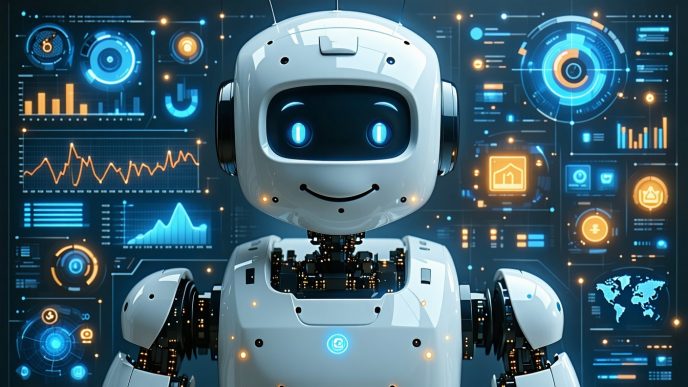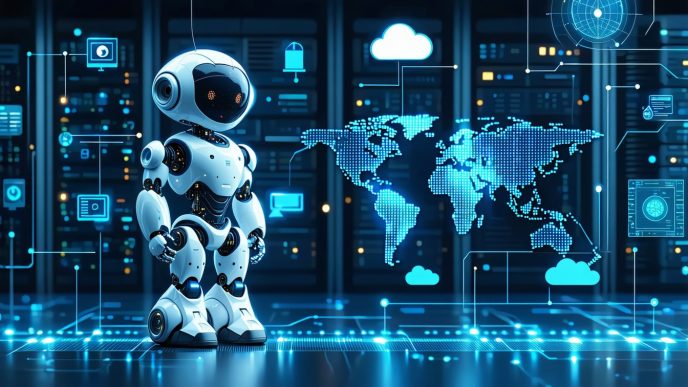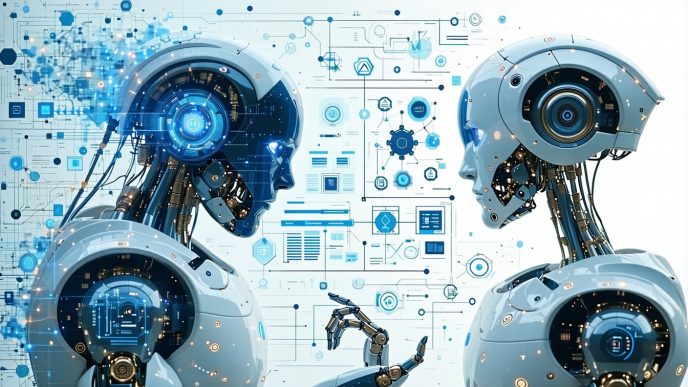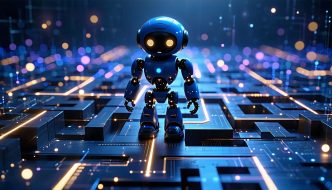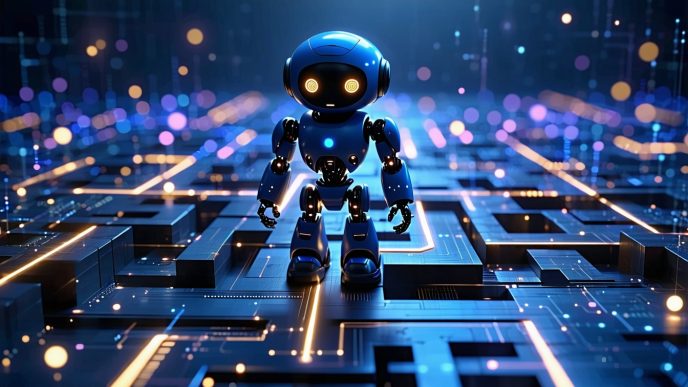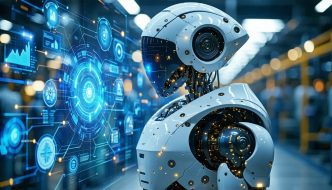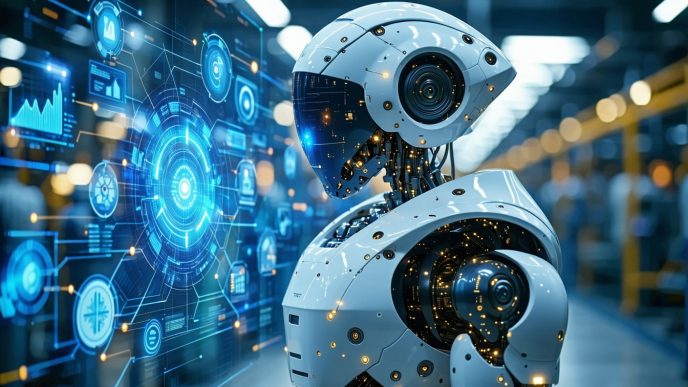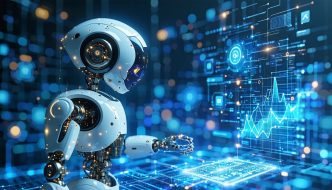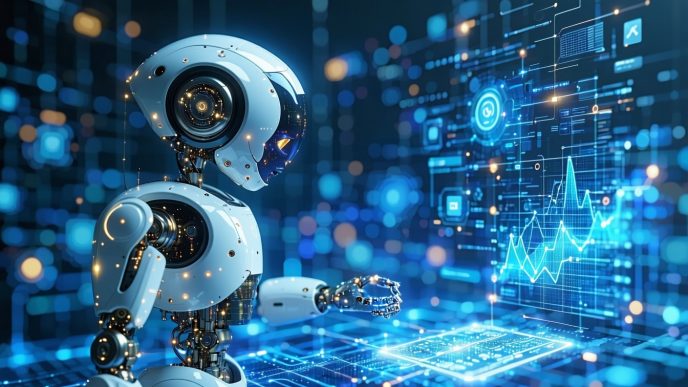Understanding Multi-Agent AI in Robotics
Introduction to Multi-Agent Systems
Multi-agent systems (MAS) refer to a collection of autonomous entities, often called agents, that can communicate and work together to achieve specific goals. In the context of robotics, these agents are typically robots programmed to perform tasks, either individually or collectively. Each robot operates based on its own set of capabilities, but they can also share information and coordinate actions with other robots in the group.
The interplay between communication and collaboration among these robots defines the effectiveness of a multi-agent system. These groups can perform efficiently in various applications, including exploration, manufacturing, and environmental monitoring. Understanding the fundamentals of multi-agent systems is crucial for grasping how robots think, learn, and adapt in real-time environments.
Importance of Communication and Decision-Making in Robotics
Effective communication among robots is vital for successful teamwork and decision-making. Without proper information exchange, robots may struggle to perform tasks that require coordination or shared knowledge. Each agent must not only gather information from its environment but also convey relevant insights to its peers.
Decision-making in multi-agent robotic systems can be challenging due to the need for consensus among group members. Factors influencing group decisions include individual robot behavior, environmental conditions, and the specific goals or tasks they aim to achieve. An understanding of these dynamics is necessary for developing sophisticated robotic systems that can adapt to changing scenarios.
| Key Aspect | Description |
|---|---|
| Communication Methods | Various ways robots share data |
| Decision-Making Process | Consensus-building among agents |
| Influencing Factors | Individual roles, environment |
| Applications | Autonomous vehicles, manufacturing |
The integration of advanced AI technologies, such as real-time AI processing in robots, enhances the ability of these systems to make informed decisions rapidly. Concepts such as AI and decision making in robots play a critical role in enabling robots to interpret data, learn from their experiences, and adapt their strategies accordingly.
By leveraging multi-agent AI, robots can enhance cooperation, increase efficiency, and perform complex tasks more effectively, making them invaluable tools in various domains.
Communication Among Robots
Effective communication is critical for robots that work in groups, enabling them to coordinate actions and make collective decisions. This section explores the various methods robots use to communicate and the challenges they face in inter-robot communication.
Types of Communication Methods
Robots employ several communication methods to share information and coordinate actions. These methods can be categorized as follows:
| Communication Method | Description |
|---|---|
| Direct Communication | Robots exchange messages directly with one another using various communication protocols. This method includes wireless connections such as Wi-Fi and Bluetooth. |
| Indirect Communication | Robots communicate indirectly through the environment. This can involve leaving markers or signals, such as lights or temporary changes in the surroundings, to convey messages. |
| Hierarchical Communication | In this method, a leader robot consolidates information and relays it to other robots, allowing for a structured approach to decision-making. |
| Broadcast Communication | Robots send out information to all robots in the vicinity simultaneously, ensuring that all members of the group receive the same data at the same time. |
Understanding these communication methods helps clarify how multi-agent AI in robotics enables effective collaboration.
Challenges in Inter-Robot Communication
Despite the variety of communication methods available, robots often face several challenges:
| Challenge | Description |
|---|---|
| Signal Interference | External factors, such as obstacles or electromagnetic interference, can disrupt communication signals, leading to miscommunication or data loss. |
| Limited Bandwidth | The capacity for data transmission may be restricted, making it difficult for robots to exchange large amounts of data quickly and efficiently. |
| Synchronization | Coordinating the timing of communications among multiple robots can be complex, especially in dynamic or rapidly changing environments. |
| Interpretation of Signals | Differences in how robots interpret signals can lead to confusion and misalignment during tasks, particularly when using indirect communication methods. |
By addressing these challenges, engineers and researchers can enhance the capabilities of multi-agent AI and improve teamwork among robots. For a deeper understanding of decision-making in robotic systems, explore our article on ai and decision making in robots.
Collective Decision-Making
Collective decision-making in robotics involves how groups of robots communicate and come to a consensus on actions. This process is crucial for various applications, from autonomous vehicles to smart manufacturing systems.
Consensus Building Among Robots
Consensus building is the process through which multiple robots agree on a single decision or course of action. This involves sharing information, assessing different options, and ultimately agreeing on the best choice for the group. The effectiveness of consensus building relies on:
-
Communication Methods: Robots must utilize effective communication methods to share information. This could include direct messages, visual signals, or data exchange through wireless networks.
-
Algorithm Design: Several algorithms facilitate consensus-building efforts. These may involve voting mechanisms, information aggregation, or negotiation processes.
-
Feedback Mechanisms: Robots typically provide feedback to each other to refine their decisions. This allows for adjustments based on group performance and individual observations.
In the following table, some common consensus-building methods and their features are presented:
| Consensus Method | Description | Advantages |
|---|---|---|
| Majority Voting | Each robot votes for options; most votes win. | Simple and effective in large groups. |
| Weighted Voting | Votes are weighted based on robot credibility. | Elicits better decision quality. |
| Information Sharing | Robots share data to inform collective decisions. | Utilizes real-time data for accuracy. |
For more insights on how robots think and learn, refer to our article on ai and decision making in robots.
Factors Influencing Group Decisions
Several factors influence the decision-making process in a robot group, including:
-
Individual Robot Capabilities: Each robot may possess different strengths, such as sensory range or processing power, affecting its contributions to group decisions.
-
Environmental Conditions: The environment where the robots operate significantly impacts their decision-making. For example, obstacles or changes in terrain can alter consensus.
-
Time Constraints: In situations requiring fast decisions, robots may prioritize speed over accuracy, which can lead to different outcomes than in low-pressure scenarios.
-
Group Size: The number of robots involved can change dynamics. Larger groups may introduce complexity in communication but also benefit from diverse inputs.
The following table highlights the factors that influence group decisions in robotic systems:
| Factor | Impact on Decision-Making |
|---|---|
| Robot Capabilities | Higher capability can enhance group effectiveness. |
| Environmental Conditions | Changes may require re-evaluation of options. |
| Time Constraints | Limited time can lead to quicker, less accurate decisions. |
| Group Size | Larger groups may experience communication challenges but gain from diversity. |
Understanding these factors can help improve the design of multi-agent systems in robotics. For further exploration of how robots make decisions, consider checking our article on robot pathfinding and decision making.
Centralized vs. Decentralized Systems
In the realm of multi-agent AI in robotics, decision-making architectures play a crucial role in how robots communicate and operate as a cohesive unit. There are primarily two systems of decision-making: centralized and decentralized. Each approach has its strengths and weaknesses, influencing how effectively robots collaborate.
Centralized Decision-Making
In a centralized system, one robot or a designated unit acts as the decision-maker for the entire group. This principal robot gathers information from all the others and makes decisions based on that data. This method is effective for tasks requiring a unified direction and can enhance coordination among robots.
| Advantages of Centralized Systems | Disadvantages of Centralized Systems |
|---|---|
| Simplified decision-making process | Single point of failure |
| Easier to implement complex algorithms | Can become overloaded with data |
| Ensures consistency in actions | Limited scalability |
Centralized systems can be beneficial in scenarios where a strong leadership figure, such as a central control unit, is advantageous. Such systems are often easier to analyze and model, making them suitable for applications in automated manufacturing lines or enemy tracking in defense scenarios.
Decentralized Decision-Making
In contrast, decentralized decision-making distributes authority among all robots. Each agent operates independently and communicates with other robots to make decisions based on local information and peer input. This approach tends to be more adaptable and robust in the face of failures.
| Advantages of Decentralized Systems | Disadvantages of Decentralized Systems |
|---|---|
| Greater resilience to individual failures | Potential for inconsistent actions |
| Improved scalability | Can result in information overload |
| More adaptable to dynamic environments | Coordination may be more complex |
Decentralized systems are particularly effective in uncertain or rapidly changing environments, such as search and rescue operations or environmental monitoring. Each robot can respond to local conditions without waiting for instructions from a central authority, resulting in quicker responses.
Hybrid Approaches
Hybrid decision-making systems combine elements of both centralized and decentralized approaches. In these systems, a central unit may oversee overall strategies and goals while allowing individual robots to make execution decisions based on real-time data.
| Features of Hybrid Systems | Potential Benefits |
|---|---|
| Blends centralized and decentralized control | Balances efficiency with flexibility |
| Facilitates effective resource allocation | Can adapt to changing conditions |
| Allows for quick local responses while maintaining oversight | Ensures accountability |
Hybrid systems can optimize the advantages of both architectures, providing a structured approach while maintaining the robots’ ability to react swiftly to local conditions. This versatility proves beneficial in telecom networks, automated driving, and complex collaborative tasks.
Understanding these varying architectures of decision-making is essential for comprehending how robots make collective decisions in diverse and dynamic environments. For more insights into decision-making processes in robots, refer to our article on ai and decision making in robots.
Emergent Behavior in Robot Groups
Understanding emergent behavior is essential when studying multi-agent AI in robotics. This phenomenon can significantly impact how robot groups operate and make decisions collaboratively.
Definition of Emergent Behavior
Emergent behavior refers to complex actions or patterns that arise from the interaction of simpler rules or behaviors within a system. In robotics, this means that individual robots can exhibit advanced, coordinated behaviors not programmed directly into them when they work as a group. Instead, these behaviors emerge from local interactions among robots without centralized control.
For example, a flock of birds flying in formation exhibits emergent behavior. Each bird follows simple rules based on its neighbors’ positions and movements, resulting in coordinated flight patterns. Similarly, robots can communicate and react to their environment in ways that lead to unexpected group dynamics.
Examples of Emergent Behavior in Robot Swarms
Robot swarms demonstrate various examples of emergent behavior, showcasing how groups can solve problems and complete tasks efficiently. Below are several notable instances:
| Emergent Behavior | Description | Example Application |
|---|---|---|
| Flocking | Robots coordinate their movements to mimic the behavior of birds or fish, maintaining distance while traveling in groups. | Surveillance using drone swarms for area coverage. |
| Foraging | Robots collectively search for resources, optimizing their paths based on previous encounters with items. | Search and retrieval tasks in environmental monitoring. |
| Formation Control | Robots dynamically rearrange themselves to achieve desired formations, adapting to environmental changes. | Multi-robot systems for agricultural field management. |
| Aggregation | Robots move towards each other to form a cluster or a group, effectively utilizing collective resources. | Disaster response scenarios where robots gather for teamwork in a confined area. |
| Collective Mapping | Robots work together to create comprehensive maps of environments by sharing data and coordinating movements. | Autonomous exploration of unknown terrains in planets or moons. |
These examples illustrate the potential of emergent behavior in multi-agent robotics. As robots learn to interact and communicate more effectively, they can achieve complex objectives that would be difficult or impossible for a single robot to accomplish alone. For more insights into how robots make decisions, you can explore our article on ai and decision making in robots.
Real-World Applications
Multi-agent AI systems are increasingly finding their way into various real-world applications, showcasing their potential and effectiveness in a range of scenarios.
Multi-Agent AI in Autonomous Vehicles
Autonomous vehicles rely heavily on multi-agent AI systems for navigation, communication, and decision-making. These vehicles must interact with each other, other road users, and environmental factors to operate safely and effectively.
The table below summarizes key aspects of multi-agent AI in autonomous vehicles:
| Aspect | Description |
|---|---|
| Communication Method | Vehicle-to-Vehicle (V2V) and Vehicle-to-Infrastructure (V2I) communication enable real-time data exchange between vehicles and traffic systems. |
| Decision-Making | Collaborative decision-making helps vehicles adapt to changing road conditions, traffic patterns, and potential hazards. |
| Benefits | Improves traffic flow, reduces accidents, and enhances overall road safety. |
For a deeper understanding of how AI processes decisions in these vehicles, visit our article on ai and decision making in robots.
Multi-Robot Coordination in Search and Rescue Operations
In search and rescue missions, multiple robots work collaboratively to locate and assist victims in hazardous environments. These robots employ sophisticated multi-agent AI strategies to divide tasks, share information, and adapt to dynamic situations during operations.
The following table outlines the roles of robots in search and rescue missions:
| Robot Type | Role |
|---|---|
| Aerial Drones | Provide aerial surveillance, mapping, and real-time data reporting. |
| Ground Robots | Navigate difficult terrain, locate individuals, and deliver supplies. |
| Communication Network | Maintains constant communication between robots and rescue teams. |
Explore more about how robot decision-making is enhanced for missions in our article on robot pathfinding and decision making.
Swarm Robotics in Industrial Automation
Swarm robotics applies multi-agent AI principles to automate tasks within industrial settings, where numerous robots work in unison to perform complex operations efficiently. The collaborative nature of swarm robotics allows for increased flexibility and productivity in manufacturing processes.
Key features of swarm robotics in industrial automation are highlighted in the table below:
| Feature | Description |
|---|---|
| Scalability | Allows for easy integration of additional robots to meet production demands. |
| Robustness | The failure of one or several robots does not impact overall performance, as others can compensate. |
| Efficiency | Collective decision-making leads to optimized workflows and reduced downtime. |
For a more in-depth look at how multi-agent AI enhances learning and decision-making in these contexts, refer to our article on robot learning models explained.
Ethical Considerations and Future Implications
As multi-agent AI in robotics continues to evolve, several ethical challenges arise concerning autonomous systems. Understanding these challenges is essential for ensuring responsible development and deployment of robotic technologies.
Ethical Challenges of Autonomous Multi-Agent Systems
One significant ethical issue related to multi-agent AI is accountability. When robots work collectively, it becomes challenging to determine responsibility for decisions made by the group. For instance, if a robotic swarm fails to accomplish a task or causes a mishap, identifying which agent or what system failure contributed to the outcome can be complex.
Another concern involves bias in decision-making. Robots learn from data, and if the underlying data reflects societal biases, the robots may perpetuate or amplify these biases in their decisions. This raises questions regarding fairness and ethics, especially in applications like surveillance or public safety.
Privacy is also an ethical consideration. As robots communicate and interact more with humans and environments, maintaining the privacy of individuals becomes crucial. The data collected by robots, whether during navigation or interactions, must be handled with the utmost care to avoid unintentional privacy invasions.
Lastly, the potential for autonomous robots to operate in sensitive areas such as healthcare or law enforcement leads to further ethical dilemmas. How these systems make decisions in high-stakes environments must be carefully considered to ensure they align with ethical standards and human values. Discussions surrounding AI decision transparency in robots reflect the need for clear communication about how robotic systems operate.
Potential Future Developments in Multi-Agent Robotics
Looking ahead, advancements in multi-agent robotics will likely focus on improving collaboration among robots. Enhanced communication protocols will allow more effective information sharing, leading to better coordination and task execution. Future systems may also incorporate sophisticated algorithms that allow robots to learn and adapt in real time, creating more responsive and resilient robotic teams.
As technology evolves, integrating large language models into robotics could enable more nuanced interactions between robots and humans. These models could facilitate a better understanding of human language and intentions, enhancing collaborative tasks with diverse teams. For insights into this development, refer to our article on large language models in robotics.
Moreover, the expansion of edge AI is set to allow robots to process information more efficiently without relying on centralized data servers. This approach can lead to quicker decision-making and better reliability, particularly in environments with limited connectivity, as highlighted in our article on edge AI in robots.
Finally, systems that include feedback loops for learning from past decisions are expected to refine their performance continuously. By focusing on models that track and adjust based on outcomes, robotics can improve their decision-making capabilities. Insights on configurations for this learning can be found in our discussion on robot learning models explained.
Addressing ethical challenges and embracing emerging technologies will shape the future landscape of multi-agent AI in robotics, ensuring that these systems contribute positively to society.

